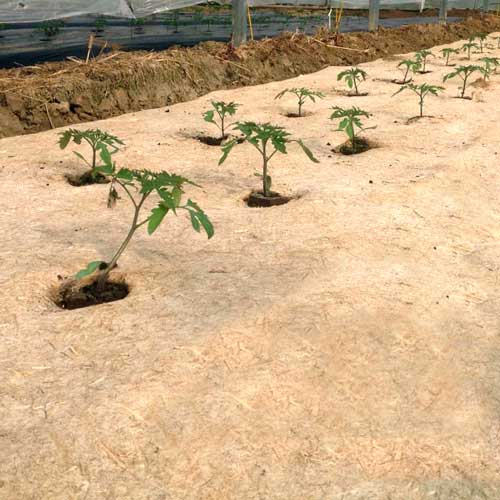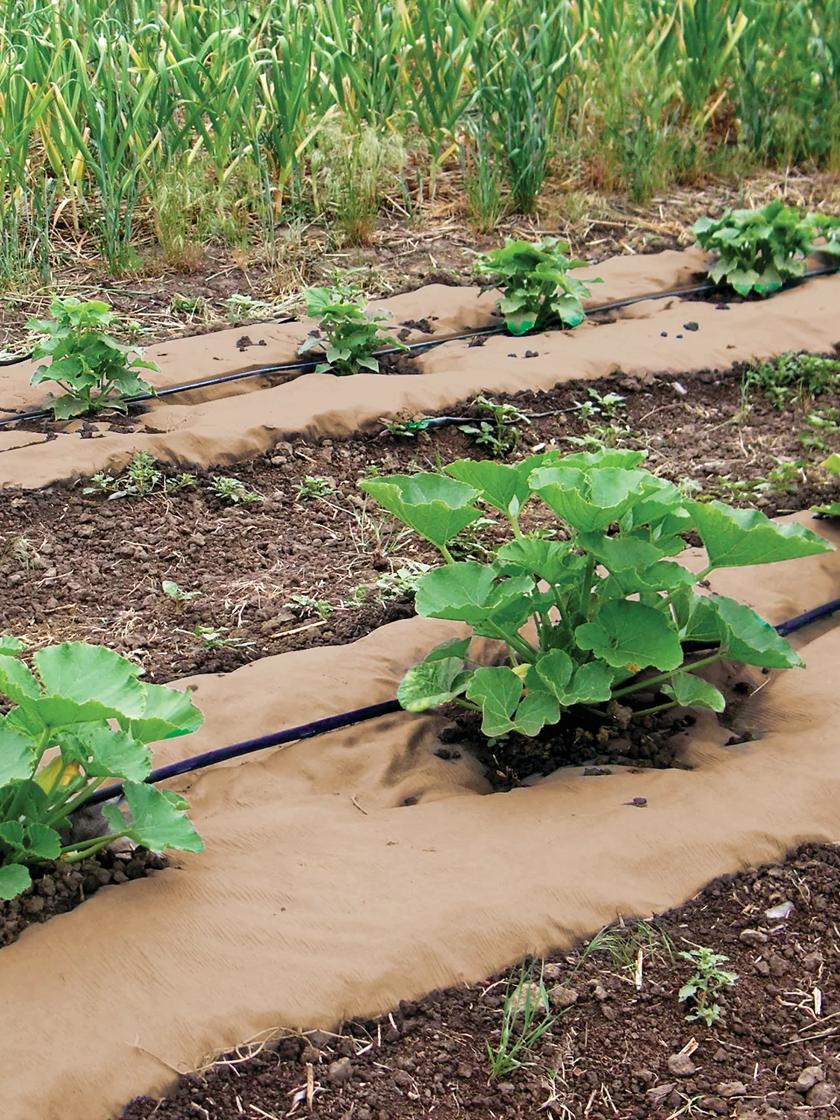Mulch Matting: The Superlative Way To Prevent Weeds And Keep Your Plants Healthy
Mulch Matting: The Superlative Way to Prevent Weeds and Keep Your Plants Healthy
Weeds are a common problem for gardeners, but there is a simple solution that can help you save time and money: mulch matting. Mulch matting is a barrier that prevents weeds from growing, while still allowing water and air to reach your plants. It is made from a variety of materials, including plastic, fabric, and rubber, and it can be used in a variety of settings, from gardens to flower beds to vegetable plots.
In this blog post, we will discuss the benefits of using mulch matting, as well as how to choose the right type of matting for your needs. We will also provide tips on how to install and maintain mulch matting so that you can enjoy its benefits for years to come.
Benefits of Mulch Matting
There are many benefits to using mulch matting, including:
- Weed control: Mulch matting is one of the most effective ways to prevent weeds from growing. It creates a physical barrier that weeds cannot penetrate, and it also blocks sunlight, which is essential for weed germination.
- Water conservation: Mulch matting helps to conserve water by reducing evaporation. It also helps to keep the soil temperature more stable, which can help your plants to absorb water more efficiently.
- Soil aeration: Mulch matting allows air to circulate through the soil, which is essential for healthy plant roots.
- Mulch retention: Mulch matting helps to keep mulch in place, so you don't have to worry about it blowing away or being washed away by rain.
- Plant protection: Mulch matting can help to protect your plants from pests and diseases. It can also help to insulate your plants from extreme temperatures, both hot and cold.
Choosing the Right Mulch Matting
There are a variety of mulch matting products available on the market, so it is important to choose the right type for your needs. Some factors to consider include the size of the area you need to cover, the type of plants you are growing, and your budget.
If you are only covering a small area, such as a flower bed or a vegetable plot, you may be able to get away with using a lightweight mulch mat. However, if you need to cover a larger area, such as a lawn or a garden path, you will need to use a heavier-duty mulch mat.
The type of plants you are growing will also affect the type of mulch matting you need. If you are growing delicate plants, such as seedlings or herbs, you will need to use a mulch mat that is made from a soft material, such as fabric. If you are growing more hardy plants, such as shrubs or trees, you can use a mulch mat that is made from a more durable material, such as plastic.
Finally, you will need to consider your budget when choosing a mulch mat. Mulch mats can range in price from a few dollars to several hundred dollars. The best way to find the right mulch mat for your needs is to compare prices and read reviews from other gardeners.
Installing and Maintaining Mulch Matting
Installing mulch matting is a relatively simple process. First, you will need to prepare the ground by removing any weeds and debris. Then, you can lay the mulch mat down, overlapping the edges by a few inches. Finally, you can add a layer of mulch on top of the matting.
Once the mulch matting is in place, you will need to maintain it by inspecting it regularly for any signs of damage. If the matting is damaged, you can repair it with duct tape or another type of adhesive. You will also need to add more mulch to the top of the matting every year or two.
Conclusion
Mulch matting is a great way to prevent weeds, conserve water, and improve the health of your plants. It is a relatively inexpensive and easy-to-install solution that can save you time and money in the long run. If you are looking for a way to improve your gardening, mulch matting is a great option to consider.
Mulch matting is a great way to suppress weed growth, retain soil moisture, and protect plant roots from extreme temperatures. It is made from a variety of materials, including recycled cardboard, plastic, and rubber. Mulch mats are typically easy to install and can last for several years.
If you are interested in learning more about mulch matting, please visit Home Gardening. Home Gardening is a leading provider of mulch matting products. They offer a wide variety of mulch mats to choose from, as well as helpful information on how to install and maintain them.
FAQ of mulch matting
- What is mulch matting?
- Mulch matting is a type of landscaping fabric that is used to suppress weeds, retain moisture, and improve soil aeration. It is made from a variety of materials, including recycled rubber, plastic, and organic matter.
- What are the benefits of using mulch matting?
- Mulch matting can help to:
- Suppress weeds: Mulch matting creates a physical barrier that prevents weeds from growing.
- Retain moisture: Mulch matting helps to keep the soil moist, which can help plants to grow healthier and more vigorously.
- Improve soil aeration: Mulch matting helps to improve the drainage and aeration of the soil, which can help to prevent root rot and other plant diseases.
- Mulch matting can help to:
- How do I install mulch matting?
- To install mulch matting, you will need to:
- Clear the area of weeds and debris.
- Lay the mulch matting down, overlapping the edges by a few inches.
- Secure the mulch matting in place with landscape staples or edging.
- Apply mulch over the top of the mulch matting.
- To install mulch matting, you will need to:
- What type of mulch should I use with mulch matting?
- The best type of mulch to use with mulch matting is a type of mulch that will not break down quickly, such as wood chips, bark mulch, or rubber mulch. These types of mulch will help to suppress weeds and retain moisture for a longer period of time.
- How often do I need to reapply mulch?
- The frequency with which you need to reapply mulch will depend on the type of mulch you are using and the climate in your area. In general, you will need to reapply mulch every 1-2 years.
- What are some of the drawbacks of using mulch matting?
- Mulch matting can be expensive to purchase and install.
- Mulch matting can make it difficult to plant new plants.
- Mulch matting can trap moisture and heat, which can create a breeding ground for pests and diseases.
Image of mulch matting
10 different images of mulch matting that are free to use:
- Black plastic mulch matting: This type of mulch matting is made of black plastic and is often used to suppress weeds. It can also help to retain moisture in the soil.

- Brown plastic mulch matting: This type of mulch matting is made of brown plastic and is often used to blend in with the surrounding landscape. It can also help to suppress weeds and retain moisture in the soil.

- Geotextile fabric mulch matting: This type of mulch matting is made of a woven fabric that allows water and air to pass through, but prevents weeds from growing. It is often used in vegetable gardens and other areas where weeds are a problem.

- Paper mulch matting: This type of mulch matting is made of recycled paper and is often used in flower beds and other areas where a more natural look is desired. It can also help to suppress weeds and retain moisture in the soil.
- Wood chip mulch matting: This type of mulch matting is made of shredded wood chips and is often used in gardens and landscapes. It can help to suppress weeds, retain moisture in the soil, and improve drainage.

- Pea gravel mulch matting: This type of mulch matting is made of small stones and is often used in walkways and patios. It can help to suppress weeds, improve drainage, and keep the area cool.
- Rock mulch matting: This type of mulch matting is made of larger rocks and is often used in flower beds and other areas where a more natural look is desired. It can help to suppress weeds, improve drainage, and keep the area cool.

- Coir mulch matting: This type of mulch matting is made of coconut fibers and is often used in vegetable gardens and other areas where a more natural look is desired. It can help to suppress weeds, retain moisture in the soil, and improve drainage.
- Hemp mulch matting: This type of mulch matting is made of hemp fibers and is often used in flower beds and other areas where a more natural look is desired. It can help to suppress weeds, retain moisture in the soil, and improve drainage.

- Jute mulch matting: This type of mulch matting is made of jute fibers and is often used in vegetable gardens and other areas where a more natural look is desired. It can help to suppress weeds, retain moisture in the soil, and improve drainage.



Post a Comment for "Mulch Matting: The Superlative Way To Prevent Weeds And Keep Your Plants Healthy"